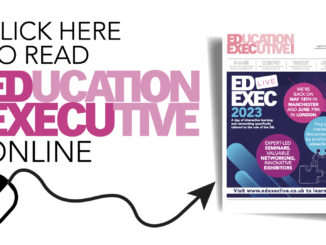
Teaching during COVID has been anxiety-inducing, but schools have been the ballast in the deeply uncertain waters of the pandemic explains Jeffrey Boakye
CREDIT: This is an edited version of an article that originally appeared on The Guardian
If you haven’t been in one since the last time you were at one, you might not appreciate that a school can often feel like a bad theme park; way too exciting, over-stimulating, and liable to produce headaches. It’s what you get if you put hundreds of kids and dozens of caffeinated adults under one roof. It’s a hive of human activity and constant, emotional interaction – buzzing with movement, noise, rapid changes, ups, downs and, in many cases, actual bells to tell everyone when to stand up and go somewhere else.
For teachers, it’s a bit like hosting an eight-hour Zoom call with nobody on mute and your camera always switched on. That’s a comparison that wouldn’t have made sense a year ago, but the pandemic has ushered in a whole new reality that we’re all struggling to deal with. Not to sound too much like a football score, it’s starting to feel like COVID-19, everyone else – nil.
Until there’s a readily available vaccine, and infection rates become stable, teachers will continue facing the warped reality of teaching under COVID. I’ll tell you what it’s like; in a word, weird.
During that first lockdown – the sunny one – many schools became empty shells, open only to vulnerable children and the children of key workers and teachers. We rattled around empty corridors and abandoned rooms. It was like the opening credits of a post-apocalyptic dystopian movie; the first time many of us had worn face masks in public places, stuttering in our steps when we met in stairwells. Was this two metres? Did he just touch that door handle? Can I touch it? Is there any hand sanitiser left?
We soon regrouped. Schools worked out how to be COVID-secure: one-way systems, no-go zones, policies and protocols. Still eerie, but inching slowly back to something close to normal. Sort of.
Welcome to the future
My first time teaching online was anxiety-inducing. Like trees that fall in a forest with no-one around to hear, my students were there but not there, absent but present. Without all the usual sensory input that makes a school a school, I became a disembodied deliverer of content, my classes only able to communicate through the chat function – a sidebar full of textspeak. (We’d been advised to not let them unmute. Welcome to the future.)
But even when they can’t be seen or heard, children are never truly absent. If nothing else, a teacher is a constant in a child’s life. We’re there, every day, every week, every term, part of the furniture. It was a panic to see so many kids drop off the radar, unable to access this brave new world due to a lack of tech, a lack of will, or both. We could ask where they were and send work home, but we couldn’t drag them in. And what’s a school without pupils?
I felt myself missing the interactions – good, bad and ugly – and becoming grateful when anyone turned up at all to my online lessons. In a job that’s all about communicating with people for extended periods of time, COVID is a reminder that a school is a deeply communal entity – a genuine community.
Teaching under COVID isn’t without fear. As school populations have fluctuated, the threat of transmission has grown increasingly tangible. I’ve watched the staff room thin out as colleagues have been taken ill or been forced to self-isolate, while student outbreaks have led to bubble closures – another piece of COVID speak that we didn’t have last year.
Not all doom and despair
I caught it myself in October. Being black, and part of the so-called BAME cohort that has been disproportionately affected by the outbreak, I was already at ‘medium risk’. This came with a risk assessment outlining what I could, should and shouldn’t do, but it’s impossible to teach and be two metres away from all students at all times – not to mention wiping down every shared keyboard, mouse and photocopier display panel, or the constant handling of hundreds of exercise books. I can’t say for certain that I caught COVID at school but, since my illness, I’ve been a lot more wary of the risks.
It isn’t only the disease that’s to be feared, either. We’ve all seen this year how pupils’ exam results, and thus their futures, can hang in the balance of government algorithms. How social inequalities can, so easily, lead to material deprivation and financial instability. A generation of young people are staring down the barrel of an exam system that COVID has shown to be precarious. When students have put their faith in your promises as a teacher, you start to wonder if you’re part of the problem or the solution.
But it’s not all doom and despair. You may not believe me, with my 13 weeks’ holiday and ‘early’ finishes, but teachers want to be at school. We want to teach. COVID has exposed the vulnerabilities of the education system but it’s also revealed what’s at the very core of being a teacher; relationships. It’s in our nature just as much as it is in our job descriptions to be there for our students when they need us.
My job has always been much more than talking about books and telling kids how to pass exams. Now, more than ever, I’ve become part of the ballast for the COVID generation in deeply uncertain waters. And when the only thing that seems certain is more uncertainty to come, that’s a privileged position to be in.




Be the first to comment